With Monica and Charlize in full swing, i’m sure you are wondering where’s the volume control? Well, we had the short-lived Maggie – our autoformer based volume control – but we had to stop selling her as we found something better.
And we have been working hard to put her into production but encountered many problems along the way. Along the way, we have folks, lots of i’ll emphasize here, asking when will we ever see the light of the day on our new volume control. Even more and more folks are asking on the forum.
So it’s only fair I’ll spill the beans here.
We found the Light Dependent Resistor (LDR) solution to be much much better than ALL passive preamps we could lay our hands on. This includes transformer volume control, autoformer volume control, shunt/series resistive stepped attenuators, marque volume pots like Black Beauty…
And the list of TVCs include those amorphous types, nickels, C-core blah blah blah. In short, the LDR triumps over all.
But building it isn’t easy. LDRs aren’t manufactured to tight specs (despite what the manufacturer tells you). Also, some exhibit drift over a period of time. All in all, it’s easy to build, but difficult to get it balanced between channels. Otherwise you’ll most likely get channel imbalance.
Our production unit is so close, yet so far to fruition. Plagued by the said channel imbalance problem! We are still working on this. In the meantime, made progress on other areas. Thought i’ll share with you here.
Err, you could build your own ldr volume control. It isn’t that difficult at all.
Make your own LDR volume control
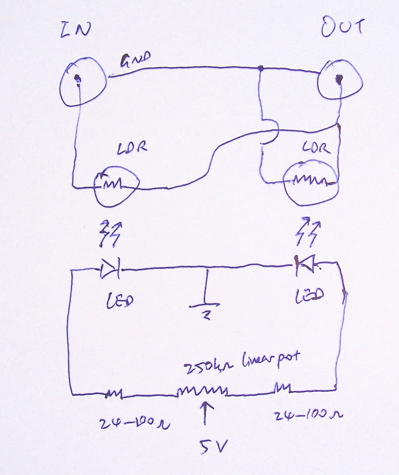
That’s how easy the schematic is! The 24-100 ohm (1/4W will do) is meant to limit the current flowing into the LED. The 250kohm linear pot controls the current flowing into each side. You, of course, have to align the LDR/LED nicely…
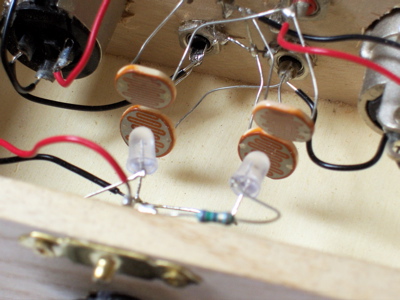
In fact, a trip down to an electronic parts store like RadioShack and you have everything you need. Any 5V supply will do. I use a switching supply which is a bit noisy but doesn’t affect the operation here as the power supply circuitry is isolated from the LDR side.
An integrated chip solution
Also, I have worked on another volume control application. This is using Texas Instrument’s PGA2311 – a… volume control chip.

The 2 hefty trans is for the +5/-5V supplies. Shown here is the underside of the PCB where the LED display shows at which volume setting you are on. Also, the IR receiver sits just above the LED display. Oh yes! This means it has remote control features as well.
All in all, this TI solution works pretty good. Sound wise already kicks the ass of many volume controls out there. Even BETTER some TVCs.
Hey hey hey, wait a minute. Such simple solutions but beat the living daylights out of those expensive TVCs? No, I’m not on drugs. I believe the key reason why these volume controls sound better is not so much on its design but more on its absence of the physical switch. No switch, thus no contact problems. No contact problems, no degradation of signals and thus no degradation of sonics.
Comparing to the rest of the volume control applications, both applications above reign in the region of dynamics and especially dynamics. Ever hear folks complain that passive pres sound wonderful but lacking in dynamics? Well siree, here’s loadsa dynamics for you!
Please be patient. We are still working on our LDR solution. It has remote control and LED display as well. We just need to fix the channel mismatch problem.
Or, you could just rig up one yourself. Minus remote features of course.
Update on 2nd Dec ’08.
I forgot to link to the excellent (and very long) thread on diyaudio about the “Lightspeed Attenuator”.
After more hours of running, I’m totally surprised by PGA2311. Sounds VERY GOOD now!

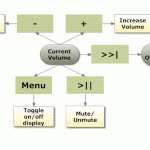


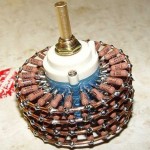
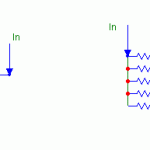



Yeo, the LDR is genius. Why not just separate L&R channel and use 4 diodes?… bingo, balance control. I’m not sure a chip will sound better. I burned up my share of TI VCIC over the years. :-*
Greetings Yeo!! Well I thought about it too some time ago! – but didn’t had the nerve because of LDR matching and even finding “quite” LDRs too.
Second…I just couldn’t imagin’ that it !! really!! beats a non compromised shunt -stepped attenuator….
Wow!
Well as ever I can and alwas could trust your ears 😉 and I’ll give it try.
But all folks need to know (& I can only emphasize it again): that it’s build easy but isn’t matched or held stable easily!!
A dark small chamber is advicealble for the LDR LED Volume too – to keep it away from any outstanding light sources.
Wish you the best! and soon sucess!! I’ll be building nice monica dacs in the mean time 🙂 (Thanks!)
Great for investigative work
:-* , very innovative…. if you are looking for tighter specs, may I suggest that you look into a Hi-Reliability Optically Coupled Isolator? something like these: http://www.optekinc.com/viewparts.aspx?categoryID=7 , a led and photosensor in one package and will not be very much affected by daylight. Do try out and let me know if it works well. ps-i have not relation with the abv mfr.
I worked on this volume control and mine is working perfect. The trickey part of this is that you have to built two compatiments in a little case and spray it black on the inside.
There must be no light at all when you close the case.
Off course you have the inputs on one side and the outputs on the other.
So the way to do it right is the case and the two sides apart!!!
You are on the threshold of a significant discovery.
Please keep me updated on the volume control progress ..
What Is the part number on the LDR`s.
Or light resistans.
Very cool solution 🙂
My gool is to build but i a tip on the LDR`s
Best regard H-O Karlsson
we now have beyonce and eva! check out the diyparadise homepage. 😆
Which one of the Optek LDR/LED would be the right one. I just found this tonight and I have been thinking all day about what volume pot I should use for the PP 807 amp I am building. I love this idea.
which one is the right one? no idea.
we use silonex here though i had good results with generic ones too.
Is there an optimal color of the led? White? Blue?
colour of the led depends on which of it is your ldr most sensitive to. its datasheet should tell you.
the ones i bought are most sensitive to red.
Why Bother with ldrs and leds? You can buy both them in one specialised package: silonex NSL32 SR2.
There is an enormous thread on diyaudio about the ‘lightspeed’ attenuator which uses these devices.
You have to buy at least 10 to find a matched pair.
with the silonex, you need to order from larger electronic retailers. not everyone carries the silonex brand.
but ldr and leds, any self-respecting electronic shop should sell them.
besides as you said, you need to buy at least 10 to find a matched pair. with ldr and leds, you could match them easily by physically aligning the light exposure on the ldrs.
LDR Volume and balance? Sure seems a lot like the controls on my Hafler IRIS preamps, from the 70’s! I always did like the way they operated. Never a scratchy sound, and interesting ballistics. I suspect they used grain-of-wheat bulbs instead of LEDs.
Have just found ur website, but page is last dated 2008. Have you updated progress on the volume control application and display, using the Texas PGA3211 chip?
hi gary
the pga chip eventually found itself into a product named beyonce. check out the e-store.
quite versatile. i even made a 16 channel preamp for a customer using pga2311. it’s 16 way as its’ a 4 way balanced active crossover system.
yeo